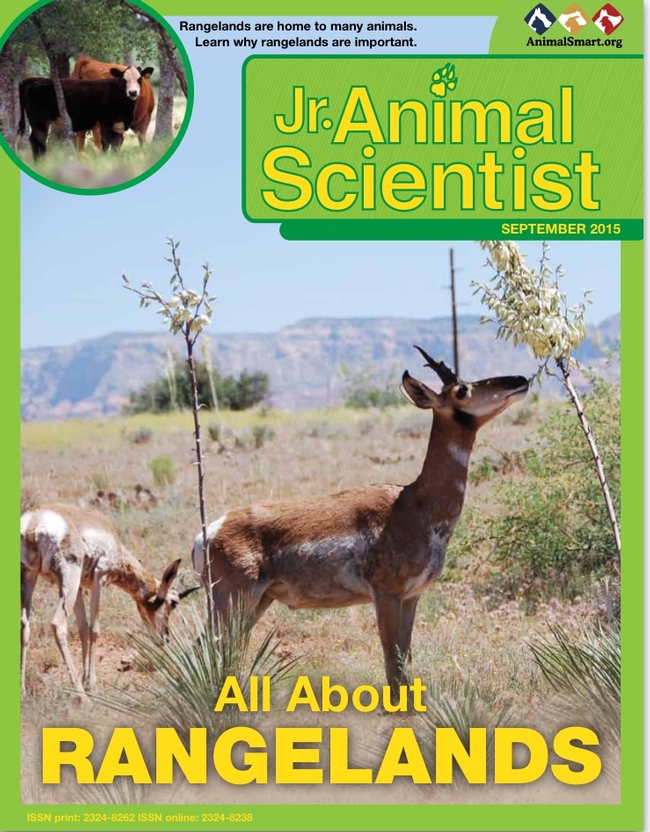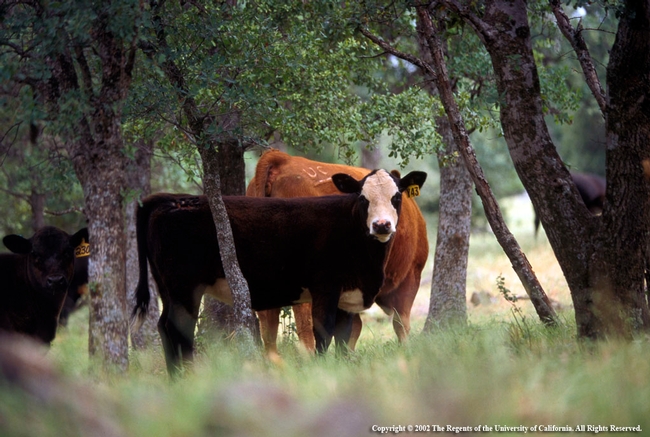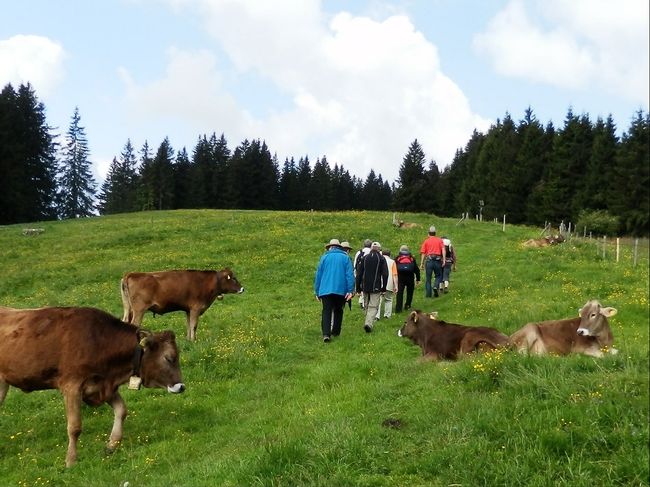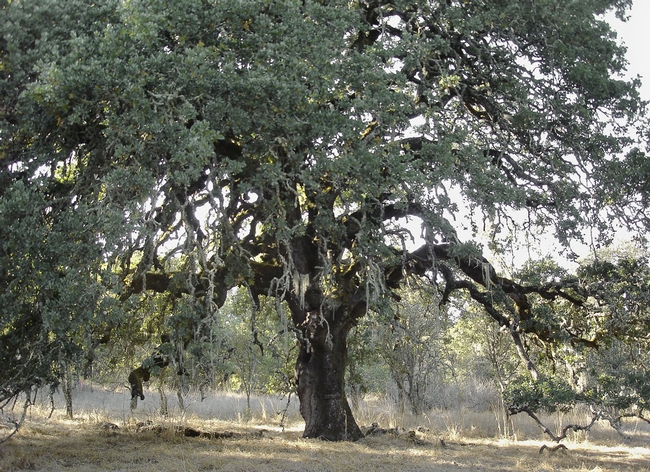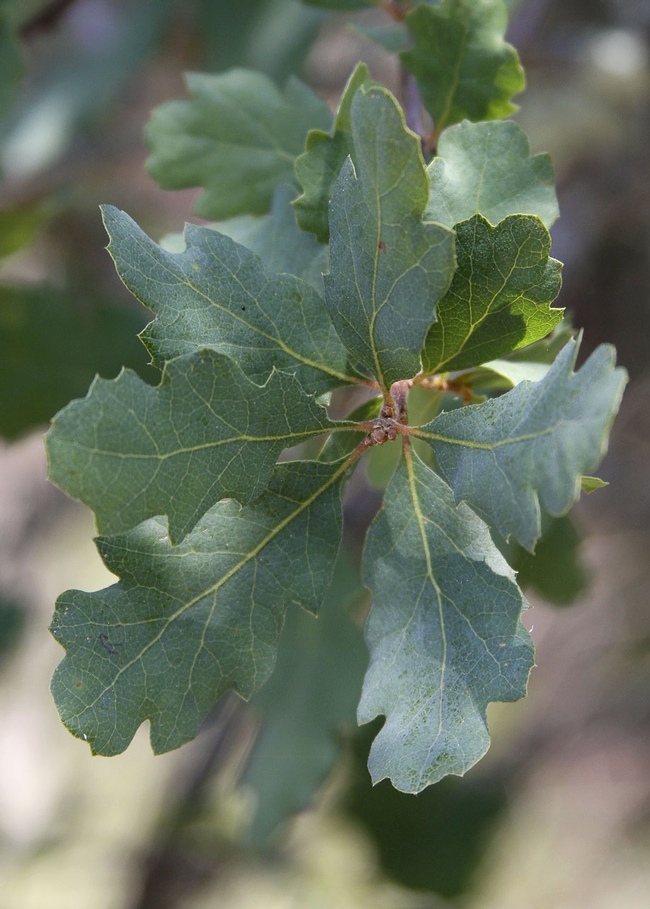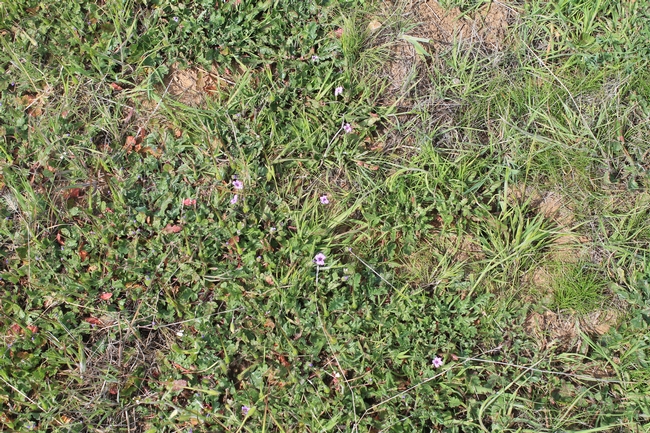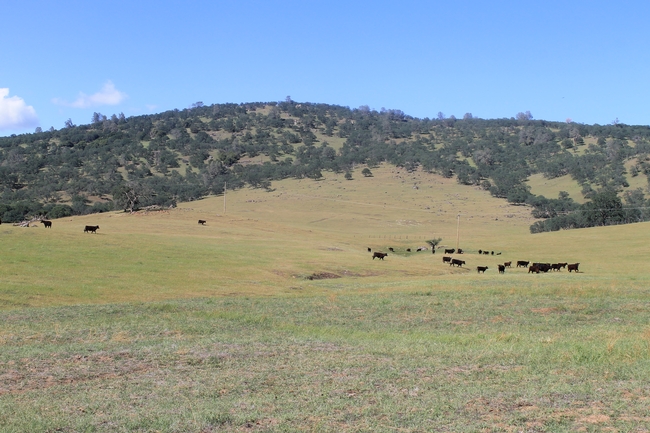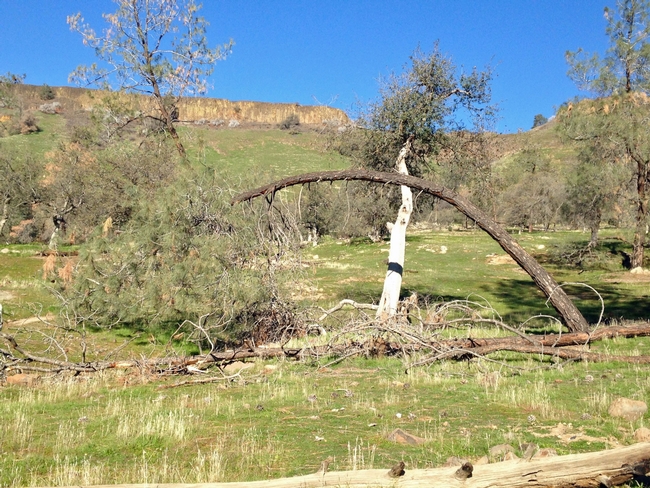Posts Tagged: rangeland
Children’s magazine focuses on rangeland animals
Rangeland is where deer and antelope play. It is also home for grazing livestock and many other animals. “Almost half of the land on Earth is rangeland and one-third of the United States is rangeland,” the latest issue of Jr. Animal Scientist tells its young readers. A UC Agriculture and Natural Resources (UC ANR) advisor is among the scientists who contributed to the rangeland issue of the children's magazine.
Jr. Animal Scientist is published by the American Society of Animal Science for children aged 5 to 12 who are interested in animals. For the September 2015 issue, members of the Society for Range Management collaborated with ASAS to provide photos and facts about rangeland.
Theresa Becchetti, UC ANR Cooperative Extension livestock and natural resource advisor for Stanislaus and San Joaquin counties, and Lisa Page, from the University of Arizona, served as co-editors for the special issue.
“Our goal is to have kids and their parents and teachers learn the value of rangelands, beyond being used to produce beef and lamb; they also provide habitat for wildlife,” said Becchetti. “Rangelands can produce energy – solar, wind and oil – while providing clean water and air and a place for recreation. These resources are protected by ranching families, the stewards who make their homes on rangeland.”
In the magazine, readers will find descriptions of the different kinds of rangeland, a map of rangelands and photos of some wildlife species that live on rangelands. It also includes a word scramble and rangeland-related jokes (“Why do cows wear bells? Because their horns don't work!”)
“As a member of the Society for Range Management, and working on developing curriculum on rangelands in California, I was excited to be involved in the effort,” Becchetti said. “The magazine has a national circulation with a mix of families and schools.”
A PDF of the Jr. Animal Scientist rangeland issue can be viewed at http://ucanr.edu/sites/news/files/220859.pdf.
People and cattle can share open space
When a hiker on a San Francisco Bay Area parkland unknowingly walked between a cow and her calf, the mother came over, knocked the hiker down and stepped on him. In another incident, a woman walking her dogs off leash was chased by cows. She slipped and sprained an ankle.
Such incidents, though rare, prompted UC Agriculture and Natural Resources (UC ANR) experts to write guidelines for people who hike, cycle or ride horses in natural areas where grazing cattle are used to manage the land. The four-page publication, Sharing Open Space: What to Expect from Grazing Livestock, is available for free download from the UC ANR online catalog.
“Areas that were traditionally rangelands, especially in urban counties, are more and more often becoming parklands,” said Stephanie Larson, UC ANR Cooperative Extension livestock advisor in Sonoma County and lead author of the publication. “State parks generally remove grazing, but we didn't want to see that at regional and county parks.”
Cattle grazing can provide important services to these working landscapes, like managing the vegetation, reducing fire hazards, increasing water capture, and promoting the diversity of plant. With education, Larson believes, people who hike, bike and horseback ride can coexist peacefully with the cattle.
Cattle may seem intimidating because of their size, but they are vulnerable to attack by coyotes and other predators. As prey animals, cows naturally experience and express fear and protective behavior, especially when unfamiliar people and animals are near and to protect their young.
Cattle can feel threatened by dogs, which they will perceive as predators. The guidelines recommend keeping dogs close and under complete control at all times. Just like people, dogs should never get between a cow and her calf.
The guidelines detail typical cattle posture when relaxed and when agitated, their response to intrusions into their personal space (or “flight zone”), and reactions to loud noises.
“Unless you need to move cattle out of your way, such as move them off a narrow trail, it's best to give them plenty of space and avoid their flight zone altogether,” the guidelines advise.
Injured cattle should be reported and left alone. The guidelines suggest people never approach a cow from behind, make quick movements or flap their arms, or try to “rescue” calves that seem to be separated from their mothers.
“The mother may be off drinking or eating, and will return to the baby,” the authors write. “She may even be watching you.”
Co-authors of the guidelines with Larson are Sheila Barry, UC ANR livestock and natural resources advisor in the Bay Area, and rangeland management consultant Lisa Bush.
An initiative to maintain and enhance sustainable natural ecosystems is part of UC Agriculture and Natural Resources Strategic Vision 2025.
Thinning is an effective tool for management of blue oak woodlands
Stately oak trees with blue-green leaves – known as blue oaks – are found in the foothills of California's Sierra Nevada and coast range, and nowhere else on earth. They are valued for their beauty, wildlife habitat, shade and acorn production. Protecting the resource poses challenges since the vast majority of blue oak woodlands are part of privately held ranches where owners use the landscape to raise cattle for a living.
Researchers with UC Agriculture and Natural Resources (UC ANR) have worked with landowners for decades to help them manage these oak woodlands in ways that balance the ranchers' economic needs with ecological considerations.
In the late 1990s, Tulare County ranchers Jim and Gay Versteeg were interested in thinning their blue oak stands in order to improve biodiversity of the forage growing on the land. The family offered UC ANR researchers three acres to study blue oak tree management practices to better understand the impacts of various thinning practices.
For thousands of years, fire was an important part of California's oak woodlands. Native Americans and, more recently, ranchers set fires to improve habitat and enhance desirable vegetation. However, aggressive fire exclusion during the last 30 years has led to significantly denser stands of blue oak trees.
“We looked into the fire history on the Versteeg ranch,” said Richard Standiford, UC ANR Cooperative Extension specialist based at UC Berkeley. “It burned about every 13 years prior to 1965, but since then, there have been no fires at all.”
Standiford conducted the study with two San Joaquin Valley-based Cooperative Extension natural resources advisors, Neil McDougald of Fresno and Madera counties and Ralph Phillips of Kern County. One-third of the study area was moderately thinned, and one-third was heavily thinned. For comparison purposes, the researchers left one-third of the study area untouched. The study area excluded livestock, but it was accessible to deer and rodents.
Over a period of 11 years, acorn production, stump sprouts, forage composition and forage yields were evaluated in each study block. Standiford said thinning the stand enhanced forage production, which is favorable for cattle ranchers. In areas with the highest level of thinning, there was the highest level of forage. However, the thinning did not enhance vegetative biodiversity, as the ranchers hoped.
“The Versteegs thought that, with more sunlight, the amount of native grasses would increase, but that wasn't the case,” Standiford said. “The vegetation in all the plots was mostly grasses and forbs that were introduced after Europeans began settling California, as it is in most oak woodland around the state.”
Thinning did result in the growth of younger trees from stump sprouting.
“We want the sprouts to come back to provide the next generation of trees so when the big ones die or blow over, there are young trees to take their places,” Standiford said. “The main way in which blue oaks regenerate is sprouting from stumps.”
Acorn production on a landscape scale was not impacted by thinning. Trees in the thinned plots produced more acorns per tree, however, because there were fewer trees, the same amount of acorns per acre was produced.
Standiford shared the results of the study with ranchers, land managers and researchers at the 7th California Oak Symposium in 2014; the research will be published in the symposium proceedings later this spring. He said the study results validate for landowners that thinning is an appropriate management practice on blue oak rangeland. Forage increases, the trees survive and grow back.
“If ranchers intend to thin every 15 years or so, moderate thinning is acceptable,” Standiford said. “If this is something they would do every 30 years, they could thin heavily.”
An initiative to maintain and enhance sustainable natural ecosystems is part of UC Agriculture and Natural Resources Strategic Vision 2025.
Fast and easy rangeland monitoring using repeat photography
Statements such as: "This year is the best (or worst) grass year of my adult life" or "We started seeing this weed on our property about 10 years ago and now it is all over" are commonly used to describe rangeland condition. Although such statements are most likely correct, what is lacking in most cases is rangeland monitoring data to support these statements.
What is rangeland monitoring? Rangeland monitoring is observing, collecting and analyzing data to document change over time and how these changes may relate to management and environmental factors such as climate and soil.
Landowners need monitoring programs to detect:
- Rangeland improvement so they know to continue the good management
- Negative changes in order to take corrective measures
- Weed infestation in order to start weed control
- Effects of an extreme event, e.g. drought.
Although most ranchers and rangeland scientists agree that rangeland monitoring data is critical for landowners to make informed management decisions and to better understand rangeland ecosystems, the problem is that most monitoring protocols can be time consuming and data too complex to analyze and interpret. This is especially true for rangeland managers and landowners who are busy with all the day-to-day land, animal and infrastructure management. As a result most find it difficult to add consistent rangeland monitoring to their schedules.
However, repeat photography, which is a simple and fast monitoring method that produces easy to interpret information, can be the answer. Although repeat photography does not provide detailed information, it can show changes in plant growth, plant cover, species composition, residual biomass, litter and vegetation structure.
Establishing a good repeat photo monitoring protocol involves selecting the right 1) site to take photos, 2) plot size (small plot to landscape view), 3) timing (what season) and 4) frequency (how often) to take photos, based on the goals. When monitoring for trends at management unit level, it is best to select a site that is representative of a largest part of the management unit.
For more information, see the UC Agriculture and Natural Resources guideline for using photographs to monitor rangeland, Photo-Monitoring for Better Land Planning and Assessment.
Rain helps rangeland trees and grasses begin recovery
“Water stress renders oak trees more likely to express early leaf browning and to be more susceptible to damage from native and introduced tree pests and diseases,” said Bill Tietje, UC Cooperative Extension natural resources specialist. “One or more of these (drought years) could be the last straw for an already stressed tree.”
Recent rain has helped, but trees on shallow soil or on warm, south-facing hillsides are especially vulnerable.
“We are getting many reports of trees that are on the way out or are dead,” Tietje said. “The drought is certainly weakening many trees, and those that are old or have oak worm are dying.”
The Tribune reported that stressed valley oaks have a tendency to drop limbs or for the whole tree to drop, according to a report by Mary Bianchi, UCCE advisor and director in San Luis Obispo County. This happens because the tree closes its pores to conserve water while its roots continue to soak up what water they can.
“This causes water to build up in the trunk and limbs,” Bianchi wrote. “Apparently, the extra weight can cause limbs and maybe the whole tree to break, by some reports as though the tree exploded.”
Rangeland grasses are greening the foothills
The grassy surface of rangeland is faring better, reported the Modesto Bee. Abundant rain in December brought new growth to rangeland that has suffered badly in three years of drought.
“This December has been great for growing grass, lots of moisture and warm temperatures,” said an email from Theresa Becchetti, a UCCE livestock and natural resources advisor in Stanislaus County. “I'm not counting any chickens before they hatch, though.”


